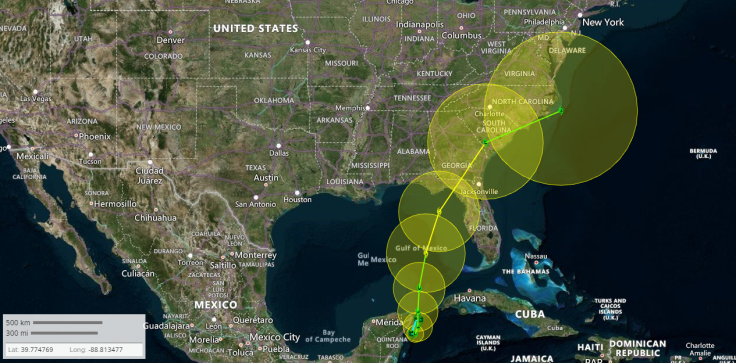'Catastrophic' Hurricane Idalia expected to hit Florida in a Category 4 storm
Residents along Florida's western shore have been warned to flee, and National Guards are prepping for rescues as the "extremely dangerous" storm approaches.

Hurricane Idalia has strengthened into an "extremely dangerous" Category 4 storm as it sweeps over the Gulf of Mexico and heads straight towards Florida's western shore, with the National Hurricane Centre warning residents of a "catastrophic" storm surge and "destructive winds".
This is the third hurricane to make landfall in Florida in the last 12 months, following Ian last September and Nicole in October.
As residents along Florida's western shore have been warned to flee and National Guards prep for rescues, the extraordinary storm is expected to hit the Big Bend coast with damaging winds and a life-threatening storm surge of up to 16 feet.
"There is great potential for death and catastrophic devastation," warns the Taylor County Sheriff's Office, located in the Big Bend region.
Only last night, the hurricane was deemed a Category 2 storm with sustained winds of up to 110 mph, primarily centred around 120 miles southwest of Florida's Cedar Key.
The first significant rain band of Idalia moved onshore in Florida yesterday evening, bringing heavy rain, powerful wind gusts and several tornado warnings.
The outer bands of the storm have been lashing at Florida's coast for several hours, which has already caused mass flooding in coastal areas, and the winds are expected to reach a sustained 130 mph before it reaches the Big Bend today.
On the island city of Cedar Key, which is located on the southern side of the Big Bend, residents have been urged by Mayor Heath Davis to evacuate immediately.
"This storm is worse than we've ever seen," Mayor Davis stated yesterday. "My family has been here for many generations, we haven't seen a storm this bad, ever."
Additionally, National Hurricane Centre Deputy Director, Jamie Rhome, states that all of Cedar Key could be completely cut off by the high storm surge.
The National Weather Service also believes that whole parts of the county surrounding Cedar Key could experience "powerful, battering waves" and life-threatening flooding, whilst many buildings are at risk of being flooded or washed away.
Ron DeSantis, the Governor of Florida, commented on the storm during a press conference, saying: "Storm surge of this magnitude is not something we've ever seen in this part of Florida in any of our lifetimes. So, please, please take the appropriate precautions."
A tornado watch is also in place for approximately 12 million people across central and northern Florida, and southeast Georgia until 3 pm, today, as conditions continue to deteriorate.
In response to the dire warnings, at least 28 counties have already been evacuated including Hillsborough, Jefferson, Leon, Madison and Franklin, and roughly 116,000 households have lost electricity.
After hitting Florida, it is suspected that Hurricane Idalia will move near or along the coasts of Georgia, South Carolina and North Carolina later today and on until Thursday.
The hurricane centre stated: "Idalia is likely to still be a hurricane while moving across southern Georgia, and possibly when it reaches the coast of Georgia or southern South Carolina late today."
Unsurprisingly, both Georgia and North Carolina have declared states of national emergency as they prepare for the cataclysmic flooding and forceful winds.
© Copyright IBTimes 2025. All rights reserved.






















